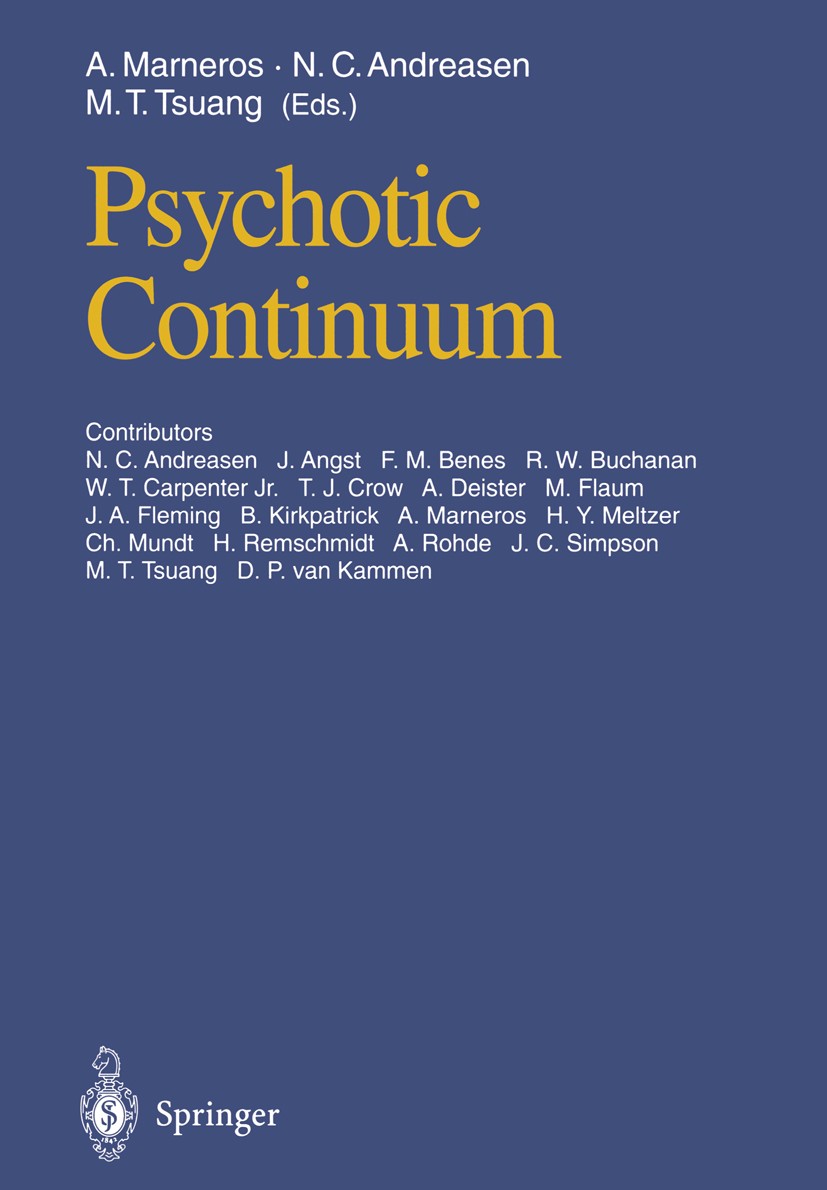| 书目名称 | Psychotic Continuum | | 编辑 | Andreas Marneros,Nancy C. Andreasen,Ming T. Tsuang | | 视频video | http://file.papertrans.cn/764/763496/763496.mp4 | | 图书封面 |  | | 描述 | One of the most important questions of our previous common volumes about affective, schizoaffective, and schizophrenic disorders was the question of what connects and what separates psychotic disorders (Marneros and Tsuang, Schizo affective Psychoses, Springer-Verlag, 1986; Marneros and Tsuang Affective and Schizoaffective Disorders, Springer-Verlag, 1990; Marneros, Andreasen, and Tsuang, Negative and Positive Schizophrenia, Springer-Verlag 1993). The boundaries between various psychotic disorders are not always clearly defined. Some groups of psychotic disorders, such as schizoaffective disorders and all the other "atypical" psychoses, occupy a position between "typical" mental disorders, such as schizophrenia, and affective disorders. The question is: Do psychotic disorders form a continuum, or are they, despite their unclear boundaries, distinct entities? On what basis should we assume there is a continuity of psychotic disorders? Solely symptomatology? Or perhaps also a continuity in genetic predispositions? Or in biological, pharmacological, and other dimensions? Is the old idea of "Einheitspsychose" (unitary psychosis) really always wrong? The contributions contained in this | | 出版日期 | Conference proceedings 1995 | | 关键词 | Einheitspsychose; Psychosen Continuum; Schizophrenie; affektive Störungen; biochemistry; cortex; genetics; | | 版次 | 1 | | doi | https://doi.org/10.1007/978-3-642-79485-8 | | isbn_softcover | 978-3-642-79487-2 | | isbn_ebook | 978-3-642-79485-8 | | copyright | Springer-Verlag Berlin Heidelberg 1995 |
The information of publication is updating

|
|
 |Archiver|手机版|小黑屋|
派博传思国际
( 京公网安备110108008328)
GMT+8, 2025-11-22 23:21
|Archiver|手机版|小黑屋|
派博传思国际
( 京公网安备110108008328)
GMT+8, 2025-11-22 23:21


